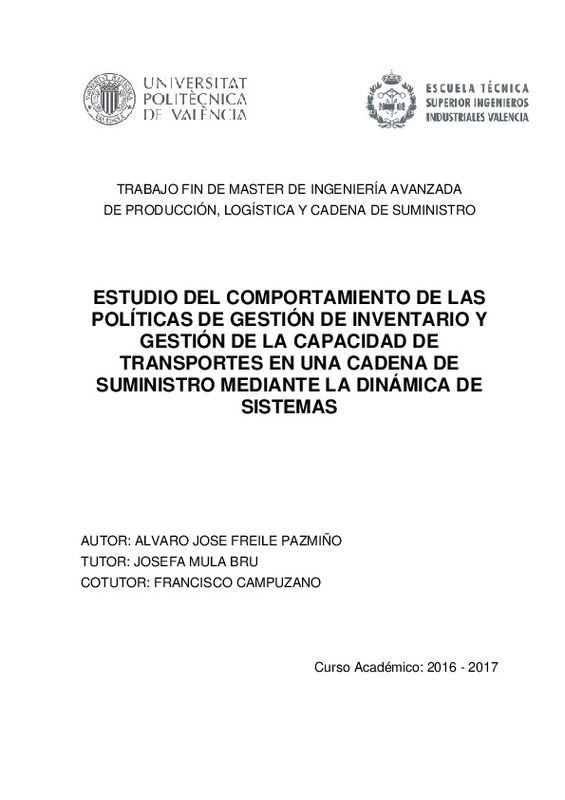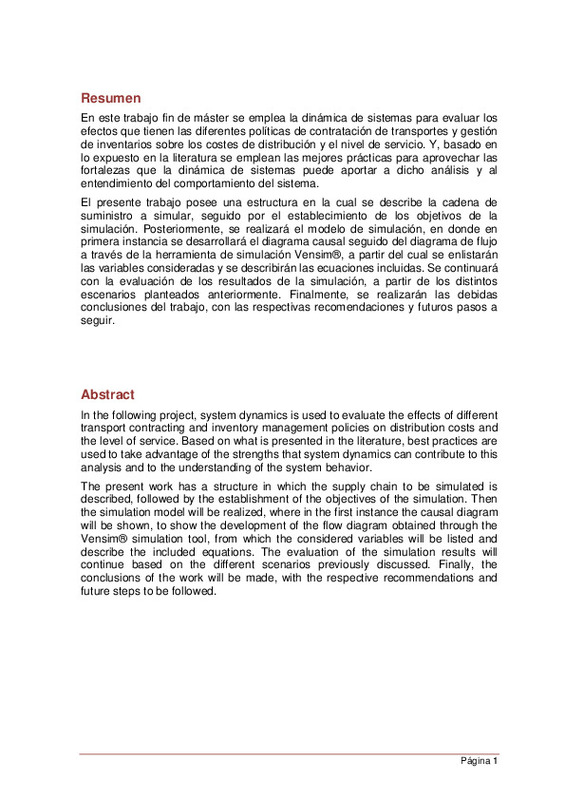JavaScript is disabled for your browser. Some features of this site may not work without it.
Buscar en RiuNet
Listar
Mi cuenta
Estadísticas
Ayuda RiuNet
Admin. UPV
Estudio del comportamiento de las políticas de gestión de inventario y gestión de la capacidad de transporte en una cadena de suministro mediante la dinámica de sistemas
Mostrar el registro completo del ítem
Freile Pazmiño, ÁJ. (2017). Estudio del comportamiento de las políticas de gestión de inventario y gestión de la capacidad de transporte en una cadena de suministro mediante la dinámica de sistemas. http://hdl.handle.net/10251/86341.
Por favor, use este identificador para citar o enlazar este ítem: http://hdl.handle.net/10251/86341
Ficheros en el ítem
Metadatos del ítem
| Título: | Estudio del comportamiento de las políticas de gestión de inventario y gestión de la capacidad de transporte en una cadena de suministro mediante la dinámica de sistemas | |||
| Autor: | Freile Pazmiño, Alvaro Jose | |||
| Director(es): | Campuzano, Francisco | |||
| Entidad UPV: |
|
|||
| Fecha acto/lectura: |
|
|||
| Resumen: |
In the following project, system dynamics is used to evaluate the effects of different transport contracting
and inventory management policies on distribution costs and the level of service. Based on what is
presented ...[+]
En este trabajo fin de máster se emplea la dinámica de sistemas para evaluar los efectos que tienen las
diferentes políticas de contratación de transportes y gestión de inventarios sobre los costes de distribución
y el ...[+]
|
|||
| Palabras clave: |
|
|||
| Derechos de uso: | Reconocimiento (by) | |||
| Editorial: |
|
|||
| Titulación: |
|
|||
| Tipo: |
|
recommendations
Este ítem aparece en la(s) siguiente(s) colección(ones)
-
ETSII - Trabajos académicos [10404]
Escuela Técnica Superior de Ingenieros Industriales








